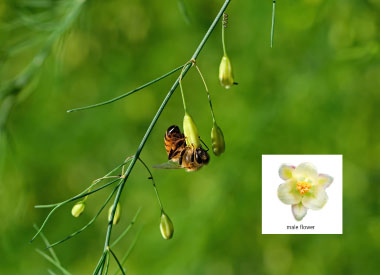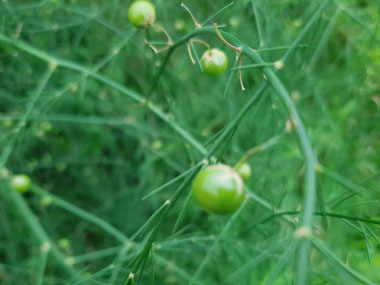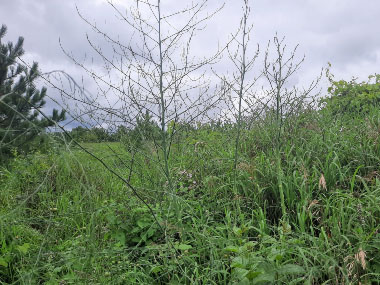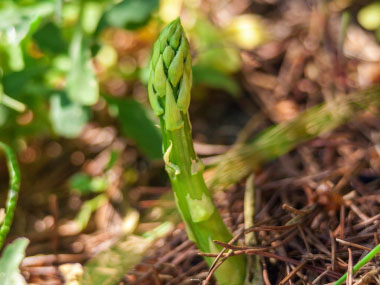






To support our efforts please browse our store (books with health benefits, etc.).
Wild asparagus is the escaped version of cultivated asparagus and is in the Asparagaceae family. It can be foraged as early as February in California, and as late as June in some locations in Canada. It’s tricky to find the asparagus exactly at the right time. Asparagus is an herbaceous perennial so finding mature plants is easy, rememember that location to harvest the following spring. The root system produces rhizomes that are long and spreading. As a result, colonies of asparagus often develop. Only the female plants produce berries and as a result they have a lower yield of spears (by as much as 1/2 or 1/3rd compared to male plants). Male plants produce bigger spears.
Distinguishing Features
Wild asparagus looks like cultivated asparagus that was left to flower and go to seed. The plant produces unique feathery, fern-like, foliage from its central stalk. It is very easy to spot when mature. In the autumn, foliage turns from green to a golden color. At the base, the plant looks like the garden variety, with its scaly leaves. When young, the fresh shoots look the same as asparagus in the grocery stores.
Flowers
Sometimes either solitary or clusters of 2 to 3 nodding flowers develop from the axils of leaves. The pedicels of these flowers can get to 2.5cm (1") long and they are glabrous. Each plant can develop either all pistillate (female) flowers, all staminate (male) flowers, or both unisexual and bisexual flowers. Each flower measures up to .75cm (1/3") long. They are narrow, bell-shaped flowers consisting of 6 greenish white or greenish yellow lanceolate-oblong tepals. Male flowers have 6 stamens with yellow anthers; female flowers have a pistil with a single style. Bisexual flowers have both stamens and a pistil. Blooming period is generally early to mid-summer depending on location. Fertile female flowers form into (toxic) fleshy berries that measure 6 to 8 mm (0.2 to 0.3"). The berries are initially green to yellowish green becoming red at maturity.
 Fields
of Nutrition has medicinal benefits and vitamin/mineral content of Wild Asparagus.
Fields
of Nutrition has medicinal benefits and vitamin/mineral content of Wild Asparagus.
Leaves
Green, compound, feathery leaves are soft, and have needle-shaped leaflets. These measure about 2.5cm (1") long and are grouped in clusters of up to 5, alternately attached.
Height
Depending on conditions, wild asparagus can measure anywhere from 75cm to 2.2 metres (2½ to 7') tall at maturity. The stems are multi-branched, slender and tend to be weak; although sometimes erect, they often droop.
Habitat
Wild asparagus tends to grow in rural areas where there is water, often around irrigation ditches in the countryside (pesticides may be an issue in these locations). This plant also can be found in random locations such as fields. Asparagus grows in full sun. Wild asparagus grows throughout the norhtern hemisphere,
Edible Parts
Only the young shoots (spears) are edible, and they are best cooked.
Winter Survival Food Handbook

PDF Plant Magazines
Types of Wild Food
Geographic Zones Seasons
Disclaimer
EdibleWildFood.com is informational in nature. While we strive to be 100% accurate, it is solely up to the reader to ensure proper plant identification. Some wild plants are poisonous or can have serious adverse health effects.
We are not health professionals, medical doctors, nor are we nutritionists. It is up to the reader to verify nutritional information and health benefits with qualified professionals for all edible plants listed in this web site. Please click here for more information.
Why Edible Wild Food?
- Food costs are rising
- Free, wild food is readily abundant
- Wild food adds nutrition to your diet
- Wild food can help treat various medical conditions





